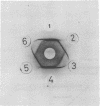Abstract
Molecular dissociation of purified type F progenitor toxin with an S20,w of 10.3 and a molecular weight of 235,000 into two components, toxic and atoxic, was demonstrated by ultracentrifugation, gel filtration, and diethylaminoethyl-Sephadex chromatography at pH 7.5. The ultracentrifugal analysis indicated that type F progenitor toxin dissociates into components of the same molecular size of 5.9S. The toxic component contained a toxicity of 2.5 × 108 50% lethal doses per mg of N. Much higher stability of progenitor toxin than that of derivative toxin, particularly at pH below 5, suggests that only progenitor toxin can act as an oral toxin.
Full text
PDF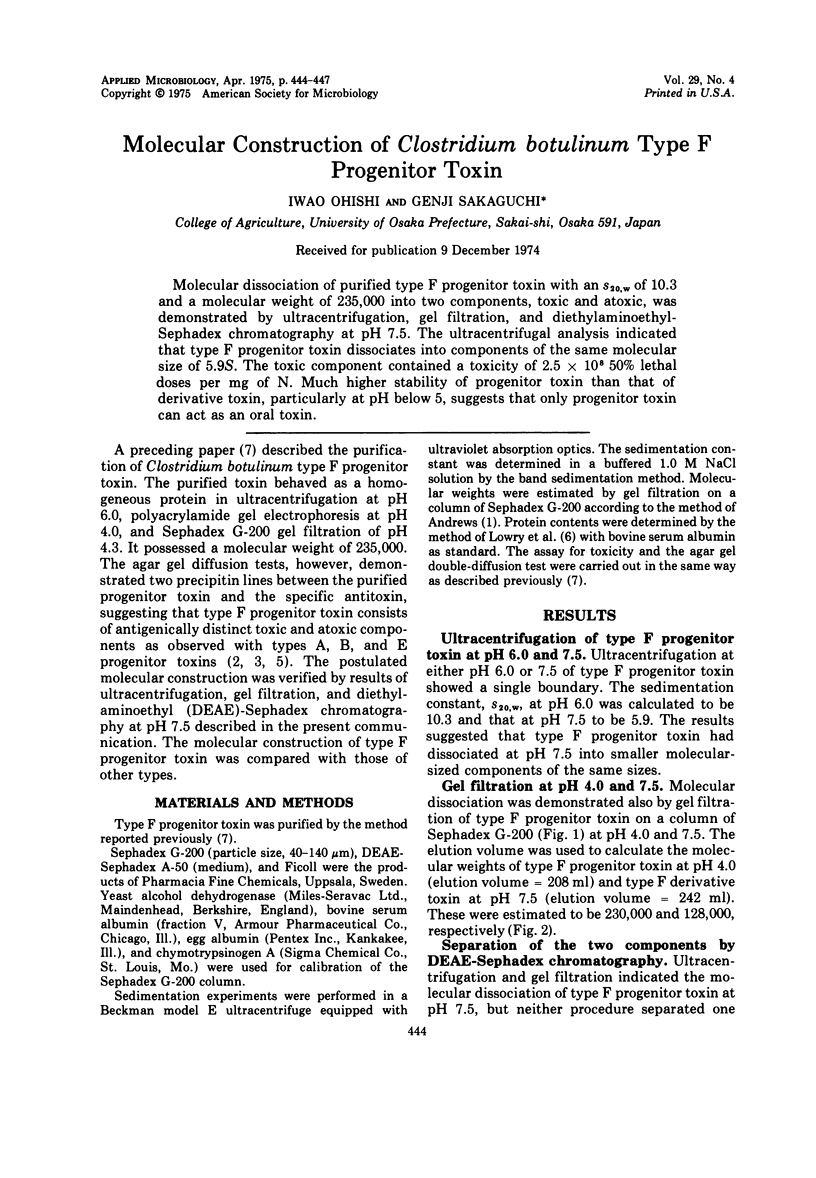
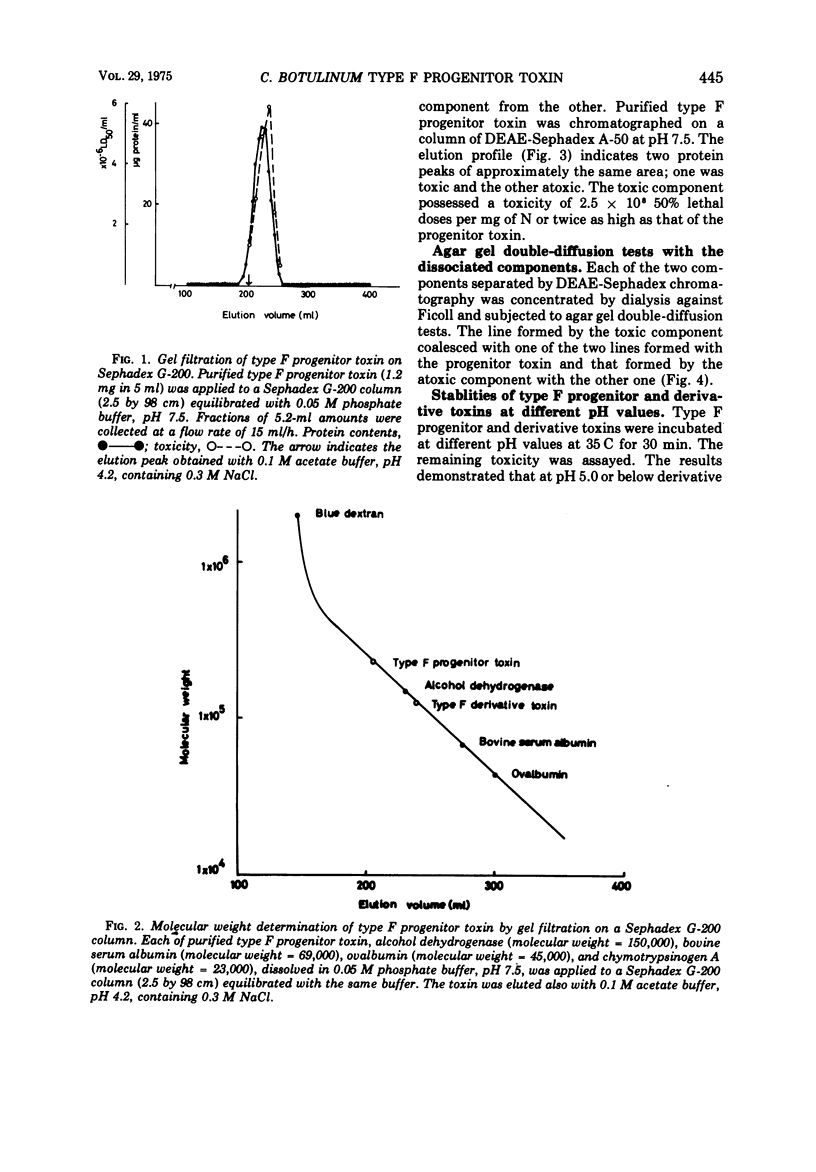
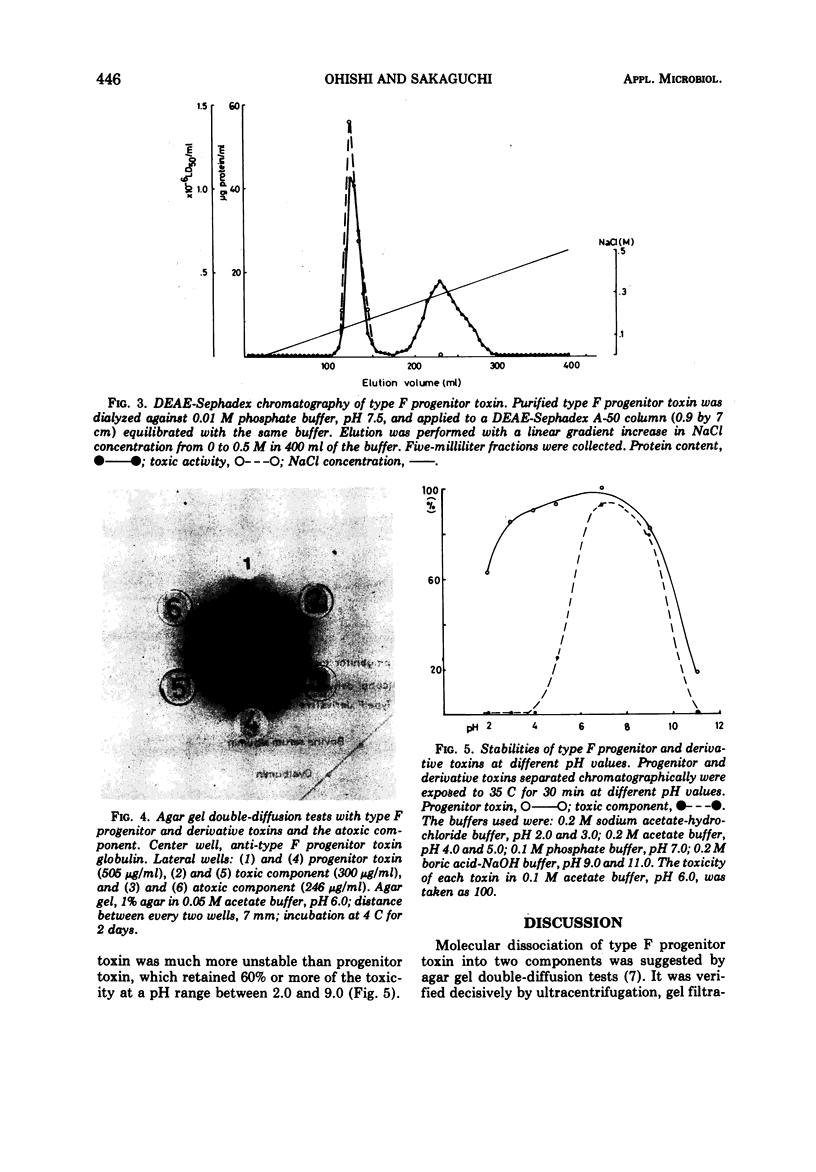
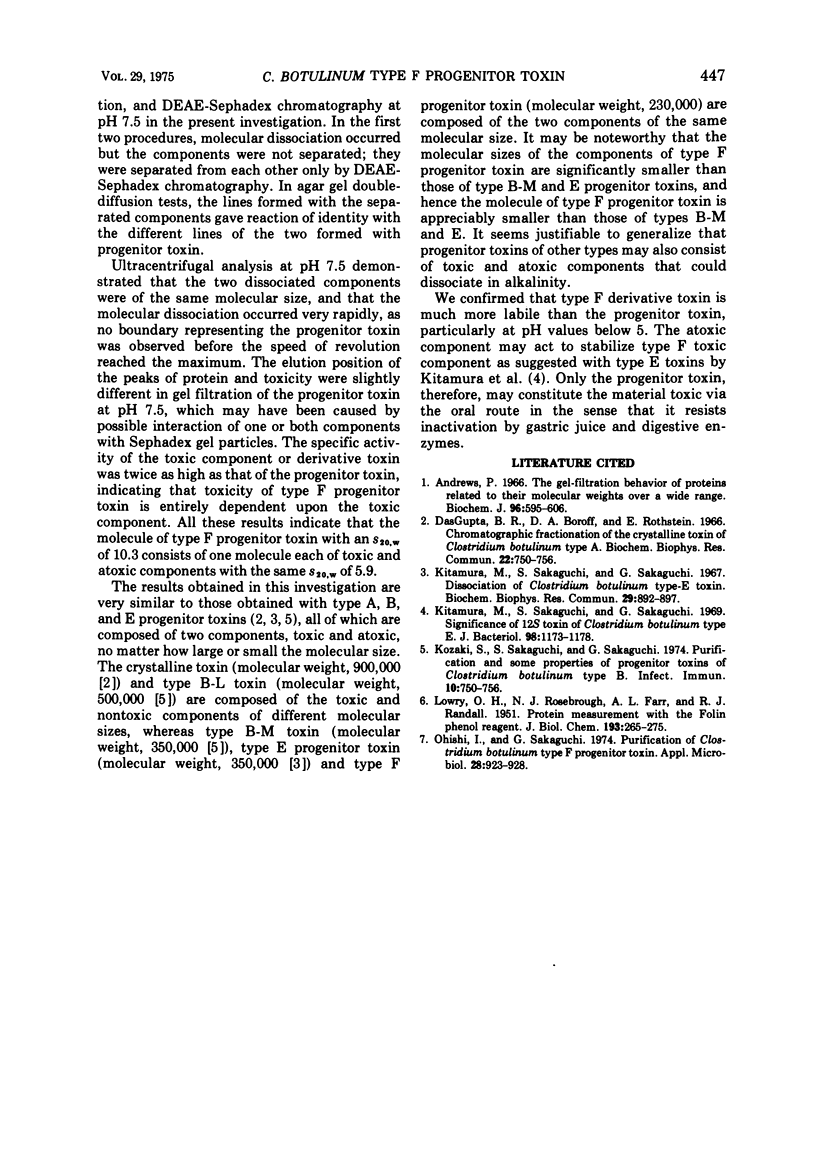
Images in this article
Selected References
These references are in PubMed. This may not be the complete list of references from this article.
- Andrews P. The gel-filtration behaviour of proteins related to their molecular weights over a wide range. Biochem J. 1965 Sep;96(3):595–606. doi: 10.1042/bj0960595. [DOI] [PMC free article] [PubMed] [Google Scholar]
- Dasgupta B. R., Boroff D. A., Rothstein E. Chromatographic fractionation of the crystalline toxin of Clostridium botulinum type A. Biochem Biophys Res Commun. 1966 Mar 22;22(6):750–756. doi: 10.1016/0006-291x(66)90212-9. [DOI] [PubMed] [Google Scholar]
- Kitamura M., Sakaguchi S., Sakaguchi G. Dissociation of Clostridium botulinum type-E-toxin. Biochem Biophys Res Commun. 1967 Dec 29;29(6):892–897. doi: 10.1016/0006-291x(67)90305-1. [DOI] [PubMed] [Google Scholar]
- Kitamura M., Sakaguchi S., Sakaguchi G. Significance of 12S toxin of Clostridium botulinum type E. J Bacteriol. 1969 Jun;98(3):1173–1178. doi: 10.1128/jb.98.3.1173-1178.1969. [DOI] [PMC free article] [PubMed] [Google Scholar]
- Kozaki S., Sakaguchi S., Sakaguchi G. Purification and some properties of progenitor toxins of Clostridium botulinum type B. Infect Immun. 1974 Oct;10(4):750–756. doi: 10.1128/iai.10.4.750-756.1974. [DOI] [PMC free article] [PubMed] [Google Scholar]
- LOWRY O. H., ROSEBROUGH N. J., FARR A. L., RANDALL R. J. Protein measurement with the Folin phenol reagent. J Biol Chem. 1951 Nov;193(1):265–275. [PubMed] [Google Scholar]
- Oishi I., Sakaguchi G. Purification of Clostridium botuliunum type F progenitor toxin. Appl Microbiol. 1974 Dec;28(6):923–928. doi: 10.1128/am.28.6.923-928.1974. [DOI] [PMC free article] [PubMed] [Google Scholar]



